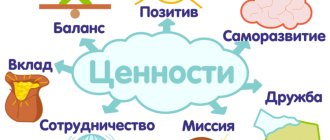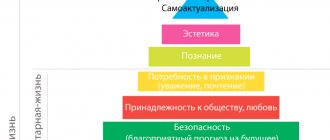Temperament and character are the basic concepts of personality psychology. It is these personal characteristics that make it possible to understand the individuality and uniqueness of a person. Representatives of various psychological schools explain the peculiarities of interpersonal interaction and work performance by a person by his type of temperament and characterological traits.
Temperament and character in life
Despite the fact that these components of the psyche are used to explain the characteristics of an individual’s activity and behavior, there is a fundamental difference between them, which is rooted in the emergence of these mental structures.
Temperament and character in psychology
Temperament in the human sciences is understood as a set of characteristics of the course of psychodynamic processes in the body. This characteristic of an individual is innate. Most often, a child’s temperament type is inherited from one of the parents. Genetic laws also explain the presence of mixed types of temperament.
There are 4 types of temperament: melancholic, choleric, sanguine, phlegmatic. The uniqueness of each person is determined by their character.
Character is a combination of an individual’s personal traits that manifest themselves in activities and behavior. Character formation depends on:
- Features of family upbringing and living conditions of a person. Severe emotional shock and the loss of loved ones leave an indelible mark on an individual’s behavior.
- The reference group and social circle of the individual (especially during adolescence). A person feels the need for recognition from others, therefore he develops those traits that are valued in a company that is attractive to him.
- Cognitive activity and level of education of the individual.
- Financial security, status position of a person in the production team.
In the process of ontogenesis, character is constantly modified under the influence of external circumstances or targeted efforts of the individual. In order to find out individuality, psychologists advise: separate the properties of temperament and character traits.
Additional Information. People can restrain the manifestation of negative traits due to their character. There are cases when people, through constant work on themselves and self-control, develop certain patterns of response that are not characteristic of their temperament.
Controls your temperament
What's the difference between them
Genetics have established what determines temperament: temperament is an innate personal characteristic, its manifestations are determined by the functioning of the nervous system. The type of temperament is determined by the following criteria:
- The speed of mental processes and their intensity;
- Level of activity and expressiveness of the individual;
- Sociability, contact, openness of a person;
- Flexibility of response and adaptability of personality;
- Emotional excitability and level of personal anxiety;
- Sensitivity, vulnerability.
Destructive character - what does it mean in psychology
A person's character is not given to him at the moment of birth. Its formation occurs with the conscious participation of its owner. It is determined to a greater extent not by psychophysiological characteristics, but by environment and upbringing.
Important! The main difference between the personality constructs under consideration is that character, unlike temperament, cannot be inherited. Everyone can change those traits of their character that they do not like. It is impossible to change the type of nervous activity, but with constant self-control, the negative properties of temperament can be smoothed out.
The relationship between character and temperament
Temperament - what is it, description
Character and type of temperament are inextricably linked. Scientists have established what temperament influences: the emergence of certain character traits is determined by the properties of the psyche. In addition, the manifestation of characterological characteristics is also determined by a person’s temperament.
The same behavioral trait can manifest itself differently in representatives of different temperament types. For example, perseverance in a phlegmatic person will take the form of concentration and carefully thinking through options for achieving a goal, while in a choleric person, perseverance will be expressed by motor activity and a thirst for action.
The peculiarities of people’s communication are explained by temperament, but if character traits were not involved in the process of interpersonal interaction, then no one would observe the limits of decency and monitor the culture of their behavior in society. Character is determined by tact, delicacy, and politeness. The above makes it necessary to distinguish between the properties of the nervous system and the result of education.
Character is manifested in the culture of communication
Temperament. Character. Personality
We present to your attention an excerpt from the book “ Temperament. Character. Personality "Simonov P.V., Ershov P.M. - Moscow: "Science", 1984.
The book by Corresponding Member of the USSR Academy of Sciences, Doctor of Medical Sciences P.V. Simonov and Candidate of Art Criticism P.M. Ershov is devoted to a popular presentation of the natural science foundations of individual human characteristics in the light of I.P. Pavlov’s teaching on higher nervous activity and the achievements of modern psychophysiology. In a number of chapters, the creative heritage of K. S. Stanislavsky is used, concerning the recreation of the characters of the characters and the principles of acting transformation into the individuality of the portrayed character. The book is of interest to a wide range of readers - physiologists, psychologists, teachers, artists, for everyone who in their practical activities is associated with issues of education, selection, and professional guidance of people.
Temperament is “a characteristic of an individual in terms of the dynamic features of his mental activity, i.e. tempo, rhythm, intensity of individual mental processes and states. In the structure of temperament, three main components can be distinguished: the general activity of the individual, his motor manifestations and emotionality.”
Character is “a holistic and stable individual structure of a person’s mental life, its type, the “disposition” of a person, manifested in individual acts and states of his mental life, as well as in his manners, habits, mentality and the circle of emotional life characteristic of a person. A person's character acts as the basis of his behavior. . ." At the first moment, it seems that the definitions of temperament and character practically coincide, although something new has appeared: mentality, manners, habits. However, in our everyday everyday practice, we are unlikely to confuse a person’s temperament with his character. It is character, and not temperament, that we will call strong, weak, hard, soft, heavy, bad, persistent, difficult to bear, etc. There are much fewer definitions suitable for describing temperament in the language: stormy, indomitable, sluggish... Perhaps the most convenient continue to use the terminology of the ancient Greeks, dividing humanity into choleric, melancholic, sanguine and phlegmatic . An intuitively felt difference, a discrepancy between temperament and character, suggests that this difference is based on some significantly different manifestations of individuality. Temperament primarily expresses a person’s attitude towards the events taking place around him. Danish artist H. Bidstrup, in a series of humorous drawings, depicted the reaction of four subjects to the same incident: an unfamiliar passer-by accidentally sat on the hat of a gentleman resting on a bench. As a result, the choleric person became furious, the melancholic person was terribly upset, the sanguine person laughed, and the phlegmatic person calmly put his hat on his head. Characters are revealed in action - active, purposeful, indecisive, submissive-imitative, etc. What they have in common is that neither temperament nor character tell us anything about the social value of a given person: a choleric person with a disgusting character can pursue sublime goals, and the soft and compliant sanguine person turns out to be a notorious scoundrel.
Personality includes both temperament and character of a person, but is not limited to them, since personality is “the core that integrates the principle that links together the various mental processes of the individual and imparts to his behavior the necessary consistency and stability.”
In Pavlov’s classification, a choleric person corresponds to a strong excitable, unbalanced type, and a melancholic person corresponds to a weak type. A sanguine person is a strong, balanced, active type according to Pavlov, and a phlegmatic person is a strong, balanced, inert type. With his characteristic observation, Pavlov noted the characteristic features of emotionality inherent in each of the main types.
According to Pavlov, a strong unbalanced type is prone to rage, a weak one is prone to fear, a sanguine person is characterized by a predominance of positive emotions, and a phlegmatic person does not show any violent emotional reactions to the environment at all. Emotions automatically point to everything that is most accessible and everything that is least accessible in a given situation in relation to all simultaneously existing needs of the subject. Since the strength of an emotion depends not only on the strength of each of the needs, but also on the possibility of satisfying them, emotion directs a person to what is most accessible in given specific conditions. Emotion is a traditional source of temptations, even leading to crime. Will, on the contrary, orients a person to what is difficult to reach, to what requires overcoming obstacles.
Everyone is worth as much as what he is concerned about is worth,
Marcus Aurelius
Recognizing the key role of needs in human behavior, we do not have a substantiated classification of them, traditionally limiting ourselves to dividing needs into material and spiritual, natural (biological) and cultural (historical).
Biological (vital) needs are designed to ensure the individual and species existence of a person belonging to living nature at the highest stage of its development. They give rise to many material quasi-needs for food, clothing, housing, technology necessary for the production of material goods, means of protection from harmful influences, etc.
Among the biological factors is the need to save energy, which encourages a person to look for the shortest, easiest and simplest path to achieving his goals. The need to save forces is close to the need for weapons (which we will have to consider specifically), but these are two different needs, although at the human level they constantly complement, support and even feed each other. The principle of saving energy underlies invention and improvement of skills, but it can also acquire a self-sufficient meaning, transforming into laziness.
social needs as a special group, remembering that all other human motivations are socially determined. However, in this case we are talking about social needs in the narrow and proper sense of the word. This is the need to belong to a social group and occupy a certain place in it, to enjoy the affection and attention of others, to be the object of their respect and love. Attempts to reduce the diversity of social needs to the “thirst for power” are hopelessly outdated. The need for leadership is only one of the many varieties of this group of motivations, and the need to be “followed” often outweighs in strength and severity the desire to be a leader.
The third and last group of initial needs consists of the ideal needs of knowledge in the broadest sense: knowledge of the surrounding world as a whole, in its individual particulars and one’s place in it, knowledge of the meaning and purpose of one’s existence on earth.
Biological, social and ideal (cognitive) needs, in turn, are divided into two types: the needs of conservation and development. A. Maslow and G. Allport call them the needs of “need” and “growth”. The acquisition of the very first, most basic skills by a small child is not connected with his hunger or thirst. Moreover, hunger and discomfort caused by a wet diaper or cold interrupt and slow down the process of acquiring skills that, in fact, the child will need much later.
The thought itself is born not from another thought, but from the motivating sphere of our consciousness, which covers our drives and needs, our interests and motivations, our affects and emotions. According to the type of thinking inherent in them, Pavlov divided all people into “artists”, “thinkers” and representatives of the most numerous middle type, equally using both thinking in images and concepts. Today we know that the left hemisphere (in right-handed people) is associated with speech, abstract conceptual thinking, and mathematical abilities, while the right hemisphere operates with sensory-immediate (visual, auditory, tactile, etc.) images, spatial representations, connected with musical abilities and combinatorial talent. Many facts indicate the predominant “emotionality” of the right hemisphere. Figuratively speaking, the right hemisphere is more associated with the generation of goals, and the left hemisphere is more associated with their specification and with clarifying the means of achieving these goals. Ideas about introversion and extroversion suffer from extreme inconsistency. Extroversion or introversion is judged by what a person’s reactions and activities primarily depend on - on external impressions arising at the moment (extroversion), or on images, ideas and thoughts associated with the past and future (introversion). L. Marton and J. Urban characterize an introvert as a strong, insensitive, unbalanced individual, and an extrovert as a weak, sensitive individual prone to inhibition.
Since a choleric person (a strong, unrestrained type) is driven by a persistently dominant need, his actions, as a rule, have the features of overcoming and fighting the characteristic emotions of anger, rage, and aggressiveness. A melancholic person (weak type), on the contrary, always gravitates toward defense, toward defense, often colored by the emotions of fear, uncertainty, and confusion. Possessing a pronounced motivational “core” and at the same time inquisitive, searching, “open” to the environment, a sanguine person (strong mobile type) experiences positive emotions more often than others. As for the phlegmatic person, despite all his emotional indifference, he nevertheless again gravitates towards positive emotions, since his inner world is well balanced and stable. And again, we must emphasize that we are talking specifically about a tendency, about a preferred inclination, since representatives of any type are endowed with the entire arsenal of human emotions .
In nature, there are no “good” and “bad” types of nervous systems. The very fact of their preservation over millions of years of first biological and then cultural-historical evolution shows that for humanity as a whole it is necessary and useful to have different types (temperaments). V. M. Teplov and V. D. Nebylitsyn at one time presented convincing evidence that for various types of activity the properties inherent in one or another temperament are optimal. If the “strong” type exhibits high stability in extreme situations, then the increased sensitivity of the “weak” type is an equally valuable quality in other conditions where the ability to quickly and subtly distinguish external signals is required. Special experiments have shown that representatives of different types of nervous systems solve the same problems equally successfully, only each of them uses their own tactics of activity. Humanity is strong in its diversity.
We once again emphasize the importance of education for the formation of personality based on the individual characteristics of the nervous system, natural abilities and inclinations .
PS
On this topic, we recommend that you familiarize yourself with the following materials:
— “Theories of Personality: Comparative Analysis” by Maddi S. // Trans. from English I. Avidona, A. Batustina, P. Rumyantseva. - St. Petersburg: Rech Publishing House, 2002.
- “Formation of the personality of a 6-7 year old child” Nepomnyashchaya N.I. / Scientific research. Institute of General and Pedagogical Psychology Acad. ped. Sciences of the USSR.—M.: Pedagogy, 1992.
— “A comparative study of thinking styles, personality type and temperament in right-handed and left-handed people” V. I. Lupandin, I. K. Pyatykh // News of the Ural State University. – 2010. – No. 4(81). – P. 95-104.
- < Back
- Forward >
Basic provisions
Based on the relationship between the two main concepts of personality psychology, scientists have identified blocks in the character structure that can be briefly described as follows:
- An emotional block characteristic of melancholic and sanguine people. It includes empathy, impulsiveness, and emotional sensitivity.
- A volitional block, pronounced in choleric people. It is based on integrity, categorical judgments, and responsibility.
- An intellectual block characteristic of phlegmatic people. It includes a penchant for analysis and reasoning, thoughtfulness, intelligence, cognitive interest, and the ability to understand the figurative meaning of statements.
How to change yourself and your character for the better
In addition, character and temperament are reunited in the overall direction of the personality. This is noticeable in a person’s attitude towards himself and others, towards his own and other people’s work, towards works of art. Personal orientation consists of goals and prevailing motives.
Important! The active formation of the basic foundations of character occurs in the period from 2 to 10 years. It is at this time that the child needs to see a positive example in an adult and adopt positive traits from him. Communication is of great importance for the development of character. There will be a huge difference between the character of a child whose family practiced respectful and trusting communication between members, and the character of a child in an orphanage.
During the preschool period, the main role model for a child is his parents. From the moment they enter school, in addition to parents, teachers and classmates influence the formation of children's character. During adulthood, the character of a man or woman is influenced by colleagues and superiors.
Additional Information. It is a common belief that the formation of character is completed in youth, but some of its traits are acquired only in adulthood.
The meaning of the term "character"
Character determines the manifestation of human personality.
The environment in which a person is located plays a significant role in its formation. Depending on different circumstances, an individual may manifest and realize different inherent qualities, which can often be opposite to each other.
The process of socialization that takes place during childhood and adolescence has a special influence on the formation of future characteristic personality traits. However, qualities formed at a young age do not determine character for life. Just as a worldview changes throughout life, a person’s character undergoes multiple changes at any age.
Character traits are understood as the distinctive properties of the human personality, from which a distinctive pattern of behavior is formed.
Manifestations of character are observed during interaction with society. The manner of communication can be very delicate or, conversely, completely unceremonious. The difference is due to character traits that differ at the individual level.
In society, it is customary to divide people into strong characters and weak ones. Those people who have the first type are distinguished by such traits as assertiveness, the ability to defend their point of view, and perseverance. The second type is often characterized by weakness of will and inability to stand up for oneself.
Modern experts have proposed a classification that divides character traits into three main groups.
The first group consists of communicative traits, such as sociability or, conversely, isolation, empathy or indifference, etc.
The second group is determined by business traits, such as responsibility or irresponsibility shown in relation to work, accuracy or negligence, etc.
The third group includes strong-willed personality traits, such as persistence or compliance, determination or indifference to one’s own success.
From the point of view of the system of human relations, manifestations of character occur in four areas. In relation to other people, to business, to oneself, to property. After analyzing all four points, you can create a psychological portrait of the personality of each person.
To summarize all of the above, character can be defined as a distinctive combination of certain personal characteristics that determines the external manifestations of human personality.
Traits of female and male temperament
Attention! While studying individual differences, psychologists have identified that the properties of the same type of temperament look different in men and women.
Various choleric people
It is known that choleric temperament is characterized by hot temper and emotionality. However, if a conflict occurs between choleric people of different sexes, then, despite the similarity of the nervous system of both participants in the conflict, the woman will be emotional. A man in a squabble will behave relatively calmly, reflecting her verbal attacks. He will follow logic, not emotions.
Phlegmatic people tend to be immersed in their own inner world. It is believed that an individual with this type of temperament prefers to be alone, since communication is tiring for him. But at the same time, 2 phlegmatic men can animatedly discuss one or another scientific concept for a long time. Phlegmatic girls will not be able to feel comfortable in the process of long-term communication with each other. Their dialogue will be diluted with long pauses and awkward silence.
Vulnerability, sensitivity and a tendency to depression are the image of a melancholic person. But melancholic men tend to suffer and complain about their unhappy fate. Women with this type of temperament more often try to help everyone in need, sacrificing their own interests.
Sanguine people tend to have a carefree attitude towards life. A sanguine man often becomes a leader in a company, but in the production sector it is difficult for him to occupy a leadership position (he lacks responsibility and self-organization). Sanguine women often become bosses and successfully manage an enterprise by delegating authority to their deputies.
How to write a term paper on speech therapy
07.09.2010 179908
These guidelines are compiled to help students gain an understanding of the content and structure of coursework in speech therapy.
Logopedia of pedagogical science that studies anomalies of speech development with normal hearing, explores the manifestations, nature and mechanisms of speech disorders, develops the scientific basis for overcoming and preventing them means of special training and education.
The subject of speech therapy as a science is speech disorders and the process of training and education of persons with speech disorders.
The object of study is a person suffering from a speech disorder.
The main task of speech therapy as a science is the study, prevention and elimination of various types of speech disorders.
Coursework in speech therapy is a student's scientific and experimental research. This type of educational activity, provided for by the educational and professional program and curriculum, contributes to the acquisition of skills in working with literature, analyzing and summarizing literary sources in order to determine the range of insufficiently studied problems, determining the content and methods of experimental research, processing skills and qualitative analysis of the results obtained. The need to complete coursework in speech therapy is due to the updating of knowledge concerning the content, organization, principles, methods and techniques of speech therapy work.
As a rule, during their studies, students must write two term papers - theoretical and practical.
The first course work should be devoted to the analysis and synthesis of general and specialized literature on the chosen topic. Based on this analysis, it is necessary to justify and develop a method of ascertaining (diagnostic) experiment.
In the second course work, it is necessary to provide an analysis of the results obtained during the ascertaining experiment, as well as determine the directions and content of speech therapy work, and select adequate methods and techniques of correction.
So, let’s present the general requirements for the content and design of coursework in speech therapy.
The initial and most important stage of working on a course project is the choice of a topic, which is either proposed by the supervisor or chosen by the student independently from a list of topics that are consistent with the areas of scientific research of the department.
Each topic can be modified, considered in different aspects, but taking into account a theoretical and practical approach. Having chosen a topic, the student needs to think through in detail its specific content, areas of work, practical material, etc., which should be reflected both in the formulation of the topic and in the further construction of the study. It should be recalled that the chosen topic may not only have a purely theoretical orientation, for example: “Dysarthria. Characteristics of the defect”, “Classification of dysgraphia”, but also take into account the practical significance of the problem under consideration, for example: “Speech therapy work on speech correction for dysarthria”. It should also be taken into account that when formulating a topic, excessive detail should be avoided, for example: “Formation of prosodic components of speech in preschoolers of the sixth year of life attending a preschool institution for children with severe speech impairments.”
The course work includes such mandatory parts as: introduction, three chapters, conclusion, bibliography and appendix.
The text of the term paper begins with the title page . An example of its design can be seen here.
Then the content of the work is given, in which the names of chapters, paragraphs, and sections are formulated in strict accordance with the content of the thesis. An example of its design can be seen here.
In the text, each subsequent chapter and paragraph begins on a new page. At the end of each chapter, the materials are summarized and conclusions are formulated.
The introduction reveals the relevance of the problem under consideration in general and the topic being studied in particular; the problem, subject, object, and purpose of the study are defined. In accordance with the goal and hypothesis, objectives and a set of research methods aimed at achieving the objectives must be defined.
The relevance of the topic lies in reflecting the current level of pedagogical science and practice, meeting the requirements of novelty and usefulness.
When defining the research problem, it is important to indicate what practical tasks it will help to implement in training and educating people with speech pathology.
The object of research is understood as certain aspects of pedagogical reality, perceived through a system of theoretical and practical knowledge. The ultimate goal of any research is to improve this object.
The subject of research is some part, property, element of an object, i.e. the subject of research always indicates a specific aspect of the object that is to be studied and about which the researcher wants to gain new knowledge. An object is a part of an object.
You can give an example of the formulation of the object, subject and problem of research:
– The object of the study is the speech activity of preschool children with phonetic-phonemic speech disorders.
– The subject of the study is the features of intonation speech of children with phonetic-phonemic speech disorders.
– The research problem is to determine effective directions for speech therapy work on the formation of intonation expressiveness of speech in the system of correctional intervention.
The purpose of the study contributes to the specification of the object being studied. The goal of any research is to solve a specific problem. The goal is specified in tasks taking into account the subject of research.
The research objectives are formulated in a certain sequence, which determines the logic of the research. The research objectives are set on the basis of a theoretical analysis of the problem and an assessment of the state of its solution in practice.
The first chapter is an analysis of literary sources, which examines the state of this problem in historical and modern aspects, and presents the most important theoretical principles that formed the basis of the study.
When writing the first chapter, you should pay attention to the fact that the text of the course work must be written in a scientific style. When presenting scientific material, it is necessary to comply with the following requirements:
– Specificity – a review of only those sources that are necessary to disclose only a given topic or solve only a given problem;
– Clarity – which is characterized by semantic coherence and integrity of individual parts of the text;
– Logicality – which provides for a certain structure of presentation of the material;
– Reasoning – evidence of thoughts (why this and not otherwise);
– Precision of wording, excluding ambiguous interpretation of the authors’ statements.
A literary review of the state of the problem being studied should not be reduced to a consistent presentation of literary sources. It should present a generalized description of the literature: highlight the main directions (currents, concepts, points of view), analyze in detail and evaluate the most fundamental works of representatives of these directions.
When writing a work, the student must correctly use literary materials, make references to the authors and sources from which the results of scientific research are borrowed. Failure to provide required references will reduce your coursework grade.
As a rule, in coursework on speech therapy, references to literary sources are formatted as follows: the number of the cited source in the general list of references is placed in square brackets. For example: General speech underdevelopment is a speech pathology in which there is a persistent lag in the formation of all components of the language system: phonetics, vocabulary and grammar [17].
When using quotations, in square brackets, in addition to indicating the source number, the page number from which this excerpt is taken is indicated, for example: Speech rhythm is based on a physiological and intellectual basis, since, firstly, it is directly related to the rhythm of breathing. Secondly, being an element that performs a communicative function, “correlates with meaning, i.e. controlled intellectually” [23, P.40].
However, course work should not be of a purely abstract nature, so you should not abuse the unreasonable abundance of citations. Quoting should be logically justified, convincing and used only when really necessary.
In the second chapter , devoted to experimental research, the organization should be described and the program of the ascertaining experiment should be presented. The survey methodology, as a rule, consists of a description of several series of tasks, with detailed instructions, visual and lexical material, the procedure for completing tasks by experiment participants, and scoring criteria. This chapter also provides a qualitative and quantitative analysis of the results obtained.
When analyzing the results of an experiment, it is necessary to use a scoring system. Examples of various criteria for quantitative and qualitative assessment are presented in the following works:
– Glukhov V.P. Formation of coherent speech in preschool children with general speech underdevelopment. - M.: Arkti, 2002. - 144 p.
– Fotekova T.A. Test methodology for diagnosing oral speech of primary schoolchildren. - M.: Arkti, 2000. - 56 p.
– Levchenko I.Yu. Pathopsychology: Theory and practice. - M.: Academy, 2000. - 232 p.
In order to visually present the results obtained during the experimental study, it is recommended to use tables, graphs, diagrams, etc. Histograms can be used in a variety of ways - columnar, cylindrical, planar, volumetric, etc. An example of the design of tables, figures, and histograms can be found here.
The third chapter provides a rationale for the proposed methods and techniques and reveals the content of the main stages of correctional work.
The conclusion contains a summary of the material presented and the main conclusions formulated by the author.
The bibliography must contain at least 25 sources. The list includes bibliographic information about the sources used in preparing the work. An example of its design can be seen here.
In the application you can present bulky tables or illustrations, examination protocols, observation records, products of activity (drawings, written works of children), notes from speech therapy classes, etc.
The volume of one course work must be at least 30 pages of typewritten text.
In general, coursework in speech therapy is the basis for a future thesis, in which the study of the begun problem can be continued, but from the standpoint of a different approach or a comparative analysis of the disorders being studied in different age categories of people with different types of speech disorders.
The content and format of theses in speech therapy can be found here.
Literature:
1. How to write a term paper on speech therapy: Methodological recommendations. Educational and methodological manual / Comp. Artemova E.E., Tishina L.A. / Ed. Orlova O.S. – M.: MGOPU, 2008. – 35 p.
2. Research work of students in the system of higher professional pedagogical education (specialty 031800 - Speech therapy). Methodological recommendations for completing the thesis / Compiled by. L.V. Lopatina, V.I. Lipakova, G.G. Golubeva. - St. Petersburg: Publishing house of the Russian State Pedagogical University named after. A. I. Herzen, 2002. - 140 p.
Is it possible to change temperament
Temperament is inherited. Man cannot change it. But this does not mean that people should resign themselves to genetic nature:
- By training self-control and willpower, choleric people can learn to restrain aggression and irritability;
- By developing communication skills, phlegmatic people, despite their inherent slowness, can become good interlocutors;
- The sensitivity and impressionability of melancholic people can help them in their creative pursuits.
Temperament and character in psychology are the basis of personality. These components of the personality structure are interdependent; with a skillful and thoughtful approach, through character, everyone can optimize their temperament.
Makes yourself better











